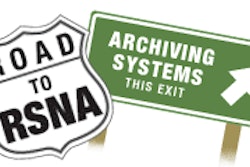This article originally appeared in the American Journal of Roentgenology, written by Dr. Howard Forman, associate editor of health policy for the American Roentgen Ray Society (ARRS).

It's a threat because American-trained radiologists in other locales can provide valuable services, particularly in delivering important and demanded services during hours when they are "too costly" to provide in the U.S. It won't lead to the demise of our specialty as we know it because much of our value lies in our ability to interact directly with our clinical colleagues and our patients. Thousands of miles diminish the overall ability of competing radiologists in providing such services.
Two scholars, Frank Levy and Ari Goelman from the Massachusetts Institute of Technology in Boston, have written a working paper titled "Offshoring and Radiology" on the economic and social factors influencing the further expansion of teleradiology. They ultimately come to the conclusion that several factors make extensive offshoring an unlikely competitive force in the future of our practice.
In this brief, I would like to review many of their findings in the hope that this clarifies some of the issues we currently face. Further, I will add my own comments and thoughts on each area, hopefully clarifying what is a contentious topic.
U.S. radiologists' ability to restrict foreign competition
History, effective lobbying, and a complex healthcare system make it very difficult for an individual radiologist to practice at a distance. This is not to say that it does not occur, as evidenced by many groups' efforts at providing distance services, but it is nonetheless complicated by several factors:
- Medicare's restrictions on paying for teleradiology interpretations
- Credentialing by managed care
- Privileging by hospitals and healthcare organizations
- Licensing by state boards
- Malpractice costs and restrictions
Because of these factors, one must expect active involvement by a U.S.-trained diagnostic radiologist, of which there is a limited supply outside the lucrative U.S. market.
It is unclear how the Centers for Medicare and Medicaid Services (CMS) will interpret its own regulations in the future in conjunction with this issue. It is clear, however, that contemporaneous interpretation is a requirement for billing and reimbursement. This requires that the billing physician attest to the fact that his or her interpretation had a direct impact on patient management, at the time of that management. In the emergency department setting, this would certainly raise some concerns about outsourced images being "officially" read with a delay.
Cognitive factors
Levy, in previous work, and in the current work with Goelman, has done an exceptional job of explaining why the radiologists' interpretation skills are very different from the work of a software programmer or service center employee, and thus not terribly suited to distant outsourcing. In particular, he points out that the best outsourced services are those for which rules-based logic apply and that "pure pattern recognition," for which rules cannot be articulated, does not fit an outsourcing framework.
In addition, Levy and Goelman acknowledge that much of our specialty work is based on relationships with clinicians who must come to trust us, individually, and as members of a group. For example, a surgeon who will go to the operating room on the findings of a CT study must have faith in the interpreting physician, lest the study have less value. Although qualifications (board certification, etc.) may ameliorate this concern, they do not dismiss it.
U.S. radiologist market factors
Our specialty is already somewhat constrained. There are many reasons for this. First, there is a limitation on the overall number of medical students graduating from U.S. medical schools each year. Even with an abundance of qualified foreign medical graduates, there is a de facto limitation on the number of residency training spots for all specialties. Finally, among these positions, only a fixed number of Accreditation Council for Graduate Medical Education (ACGME) -approved diagnostic radiology training positions exist, of which fewer still are funded by government programs (primarily Veterans Affairs, the military health system, and the federal Medicare program). Although there is no restriction on using some accredited positions without funding, practices tend to be reluctant to do this.
Thus, we find ourselves with a constrained supply in a field with relatively high compensation compared to other domestic specialties and our international imaging peers. In such a setting, it is highly unusual to find a U.S.-trained radiologist looking to live in a lower compensation environment when jobs are abundant in the U.S. In fact, the opposite appears to be true; appropriately trained radiologists in other countries are frequently looking to immigrate to the U.S. There are many competitive and regulatory forces at play limiting this, and thus the market remains somewhat tight at the present time.
Cost factors
Although imaging costs are skyrocketing and a serious cause for concern, more than 80% of imaging costs (particularly high-tech imaging) are tied up in the technical component and not subject to the usual form of outsourcing. (It is worthwhile to note that a completely different form of outsourcing is occurring, with patients traveling to distant lands for full workups and surgery; in these cases, the imaging costs are generally a small part of the total motivation for travel and outsourcing.) Thus, even if market forces were in place to reduce costs through outsourcing, there is little impact since our component is relatively small.
The flow of funds in interpretation of studies itself takes away much of the motivation for outsourcing. Radiology groups control the vast majority of emergent/urgent imaging, or that which is being done on emergency department patients and inpatients. Thus, the motive to outsource is not driven by a managed care organization seeking to hold down costs, but rather by a radiology group.
Why do radiology groups seek to outsource? Generally because the costs of providing some interpretation services off-hours exceed the revenue that might be generated. If outsourcing can represent a competitive pricing alternative, they will choose this option. In general it is the smaller practice, operating at night, that would find this option feasible.
It is important to note that the hidden costs to night-time outsourcing. For example, it may not be appropriate to bill for a study that has been read by an offshore radiologist, even when the reading is a second reading done by the domestic group. This means lost revenue is incurred in addition to the expense of the offshoring arrangement.
The foreseeable future
Although I have no doubt that offshoring arrangements can provide high-quality imaging interpretation, the social and economic factors that are currently in place in the U.S. reduce the threat of these arrangements. It would require dramatic change in the regulatory and market situation in the U.S. to make this an immediate threat to our practice.
This does not mean that our domestic colleagues should rest easy. Many concerns are being raised about imaging necessity and pricing in the U.S., by both private and federal payers. Thus, attention should be paid to the means of providing the lowest-cost, highest-quality, timely interpretation of medical images. Groups that are well-positioned in this regard will find success in any environment.
By Dr. Howard Forman
AuntMinnie.com contributing writer
March 20, 2006
Dr. Forman is an associate editor of health policy for the American Roentgen Ray Society (ARRS). This article originally appeared in the American Journal of Roentgenology (February 2006, Vol. 187:2). Reprinted by permission of the ARRS.
Related Reading
M.B.A. education for physicians: cross-training options, January 25, 2006
Dual eligibles: Rarely mentioned, critically important, December 22, 2005
Government response to escalating imaging costs, December 12, 2005
BEIR VII and separating fact from fear, November 18, 2005
Medicaid cuts and radiology's quandary, September 13, 2005
Copyright © 2006 American Roentgen Ray Society



















